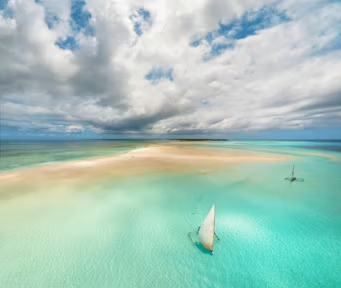Your cart is currently empty!
What Kind of Clothing is Appropriate for Safari?
FacebookXWhat Kind of Clothing is Appropriate for Safari? Introduction Going on a safari in Tanzania can be one of the most exciting adventures in life. The thrill of seeing wild animals up close, exploring vast landscapes, and experiencing nature like never before is something special. But what should you wear when you go on a…

What Kind of Clothing is Appropriate for Safari?
Introduction
Going on a safari in Tanzania can be one of the most exciting adventures in life. The thrill of seeing wild animals up close, exploring vast landscapes, and experiencing nature like never before is something special. But what should you wear when you go on a safari? This is a question many people ask before they head out on their trip. You want to be comfortable, safe, and ready for any situation that may come up. Don’t worry; we are here to help you pick the right clothing for your safari experience.
Why Clothing is Important for a Safari
Clothing plays an important role when going on a safari. The right clothes will help keep you comfortable, protect you from the weather, and ensure you blend in with your surroundings. Let’s look at what kind of clothing is most appropriate for a safari.
The Basic Rule: Light and Comfortable
When you think of safari clothing, remember to keep it light and comfortable. You’ll be in the sun, walking through forests or savannahs, and sitting in a safari vehicle for long hours. Clothing that is too tight or heavy can make you feel uncomfortable. So, it’s best to choose clothes that allow your skin to breathe, especially when it gets hot. At the same time, you want to be protected from the sun and any bugs, so we have to think about the right materials and layers.
1. Light-Colored Clothes
You may be surprised, but wearing light-colored clothing is one of the best choices for a safari. Why? Because light colors help keep you cool. Dark colors, like black and dark brown, absorb heat from the sun, making you feel hotter. Light colors like beige, khaki, and light brown will reflect the heat, helping you stay cooler. Also, light-colored clothing will make it easier for you to see dirt or stains, so you can change clothes quickly when needed.
RELATED POST: 10 Reasons to Climb Mount Kilimanjaro | Mount Kilimanjaro
Additionally, wearing light-colored clothing helps you blend in with the natural surroundings. The wildlife won’t be scared off by bright colors, and you’ll get a better view of animals without disturbing them.
2. Long-Sleeve Shirts and Pants
When you’re out in the wild, protection from the sun and insects is crucial. Even though the sun in Tanzania can be very hot, it’s still important to wear long sleeves and long pants. This may sound uncomfortable, but the key is to choose breathable, lightweight materials like cotton or linen.
Long sleeves will protect your arms from the sun’s harsh rays and any insects, like mosquitoes or tsetse flies, which are common in some safari areas. Long pants will do the same for your legs. Also, they will prevent scratches from bushes, thorns, and other plants while walking through the safari. You’ll want to wear something like light, loose-fitting pants that are easy to move in.
3. Comfortable Footwear
Your feet will do a lot of walking, so it’s very important to wear the right shoes. Make sure your shoes are comfortable, supportive, and appropriate for both walking and sitting in a safari vehicle. Many safari trips involve early morning or evening drives when it’s cooler and the animals are most active. During the day, it’s a good idea to stay inside the vehicle, but when you do get out, make sure your shoes protect your feet.
Choose sturdy shoes, like closed-toed sneakers or hiking boots, for safaris. Avoid flip-flops or sandals because they don’t offer enough protection. If you are planning to hike or walk in certain areas, make sure your shoes are well broken in to prevent blisters.
4. Sun Protection: Hats, Sunglasses, and Sunscreen
The sun in Tanzania can be very strong, and spending long hours outdoors means you need protection. A wide-brimmed hat is one of the best ways to keep your face and neck shaded. This helps prevent sunburn and keeps you cool. It also helps to wear sunglasses to protect your eyes from the sun’s glare. Look for sunglasses that block UV rays.
Additionally, sunscreen is a must. Be sure to apply a high SPF sunscreen to your skin every few hours, especially on exposed areas like your face, neck, and arms. Sunburn can ruin your safari experience, so always protect yourself from harmful rays.
5. Layers for Changing Weather
Tanzania has different weather conditions, and the temperature can change quickly during the day, especially in the morning and evening. It might be cool in the early hours but become very hot by midday. For this reason, it’s a good idea to wear layers.
Start with a light t-shirt or shirt and add a light jacket or sweater in the morning when it’s cooler. You can easily remove the layers as the day heats up, and put them back on in the evening when it gets chilly again. A good layer of clothing can keep you comfortable no matter what the weather does.
6. Bug Repellent Clothing
Sometimes, you may want to take extra steps to protect yourself from mosquitoes and other bugs. Some companies sell clothing that is treated with insect repellent, which can help keep you safe from bugs while you’re in the bush. If you’re going on a safari in an area where there is a risk of malaria, this is a good idea to keep in mind.
You can also bring along a bug spray or lotion to apply on your skin. This will help avoid bug bites and make your safari much more enjoyable.
7. A Light Scarf or Bandana
A scarf or bandana is a great addition to your safari clothing. It’s useful for many things: it can help you keep your neck and face cool when it gets hot, cover your hair from dust, and even act as a face mask when needed. A scarf is small and easy to pack, making it an essential item for your safari.
8. Don’t Forget a Camera Bag and Backpack
While your clothing is important, you’ll also need a bag for your personal items. A small backpack or camera bag can be used to carry things like your camera, extra sunscreen, water bottle, and snacks. Be sure your bag is easy to access and doesn’t get in the way while you’re out exploring.
Conventional Clothing Guidelines
Most people visiting Tanzania for safaris want to blend in with nature. But you may also wonder if you need to follow certain rules when it comes to your clothing. Here are some general guidelines:
- Avoid Bright Colors: Bright colors like red, white, or neon shades are not recommended. These colors can attract unwanted attention from animals and insects.
- Dress Modestly: While on safari, especially in rural areas, it’s important to respect local culture. Try to dress modestly, covering up too much skin to avoid unwanted attention.
- RELATED POST: 15 Best Things To Do In Tanzania
- Pack for Comfort: Remember that you’ll be spending most of your time outdoors. Prioritize comfort over style. There’s no need for fancy clothes on safari.
Conclusion
In conclusion, the right clothing is essential for a successful and comfortable safari experience in Tanzania. Light, breathable clothes that protect you from the sun and bugs, comfortable shoes, and accessories like hats and sunscreen will ensure you’re prepared for anything. By dressing appropriately, you’ll be able to enjoy the adventure of a lifetime without worrying about discomfort.
Whether you’re in a safari vehicle or on foot, your clothing should keep you protected and comfortable throughout the day. When in doubt, always think practical, and you’ll be ready to enjoy the wonders of Tanzania’s wildlife!
Custom Safari Clothing and Gear Help
If you’re planning a safari and need advice on clothing or even creating a customized safari experience, feel free to reach out to us. We are happy to guide you through all the steps to ensure your trip is smooth and enjoyable. From picking out the right gear to planning a perfect itinerary, we can help make your Tanzania safari unforgettable.
Share with
/









Leave a Reply